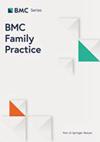Review: application of the Safety Attitudes Questionnaire (SAQ) in primary care - a systematic synthesis on validity, descriptive and comparative results, and variance across organisational units
IF 3.2
3区 医学
Q1 MEDICINE, GENERAL & INTERNAL
引用次数: 0
Abstract
Patient safety research has focused mostly on the hospital and acute care setting whereas assessments of patient safety climate in primary health care settings are warranted. Valid questionnaires as e.g., the Safety Attitudes Questionnaire (SAQ) may capture staff perceptions of patient safety climate but until now, an overview of the use of SAQ in primary care has not been systematically presented. Thus, the aim of this systematic review is to present an overview of SAQ used in primary care. Methods The electronic databases: PubMed, Embase, Cinahl, PsycInfo and Web of Science were used to find studies that used any version of SAQ in primary care. Studies were excluded if only abstract or poster was available, as the information in abstract and posters was deemed insufficient. Commentaries and nonempirical studies (e.g., study protocols) were excluded. Only English manuscripts were included. Results A total of 43 studies were included and 40 of them fell into four categories: 1) validation analysis, 2) descriptive analysis, 3) variance assessment and 4) intervention evaluation and were included in further analyses. Some studies fell into more than one of the four categories. Seventeen studies aimed to validate different versions of SAQ in a variety of settings and providers. Twenty-five studies from fourteen different countries reported descriptive findings of different versions of SAQ in a variety of settings. Most studies were conducted in primary health care centres, out-of-hours clinics, nursing homes and general practice focusing on greatly varying populations. One study was conducted in home care. Three studies investigated variance of SAQ scores. Only five studies used SAQ to assess the effects of interventions/events. These studies evaluated the effect of electronic medical record implementation, a comprehensive Unit-based Safety Program or COVID-19. Conclusion The synthesis demonstrated that SAQ is valid for use in primary care, but it is important to adapt and validate the questionnaire to the specific setting and participants under investigation. Moreover, differences in SAQ factor scores were related to a variety of descriptive factors, that should be considered in future studies More studies, especially variance and intervention studies, are warranted in primary care. Trial registration This systematic review was not registered in any register.回顾:安全态度问卷(SAQ)在初级保健中的应用--关于有效性、描述性和比较性结果以及不同组织单位间差异的系统综述
患者安全研究主要集中在医院和急症护理机构,而对基层医疗机构的患者安全氛围进行评估则是有必要的。安全态度问卷(Safety Attitudes Questionnaire,SAQ)等有效问卷可以反映员工对患者安全氛围的看法,但到目前为止,还没有系统地介绍在基层医疗机构中使用 SAQ 的概况。因此,本系统性综述旨在概述 SAQ 在初级医疗中的使用情况。方法 电子数据库:使用 PubMed、Embase、Cinahl、PsycInfo 和 Web of Science 等电子数据库查找在初级医疗中使用任何版本 SAQ 的研究。如果只有摘要或海报,则排除研究,因为摘要和海报中的信息被认为是不充分的。评论和非实证研究(如研究方案)也被排除在外。只收录英文稿件。结果 共纳入 43 项研究,其中 40 项分为四类:1) 验证分析;2) 描述性分析;3) 差异评估;4) 干预评估,并纳入进一步分析。有些研究属于四个类别中的多个类别。17 项研究的目的是在各种环境和提供者中验证不同版本的 SAQ。来自 14 个不同国家的 25 项研究报告了不同版本的 SAQ 在不同环境下的描述性结果。大多数研究都是在初级卫生保健中心、非工作时间诊所、疗养院和全科诊所进行的,研究对象大相径庭。有一项研究是在家庭护理中进行的。三项研究调查了 SAQ 分数的差异。只有五项研究使用 SAQ 评估了干预措施/事件的效果。这些研究评估了电子病历的实施效果、基于单位的综合安全计划或 COVID-19。结论 综合研究表明,SAQ 在初级医疗中的使用是有效的,但重要的是要根据具体的环境和调查对象对问卷进行调整和验证。此外,SAQ因子得分的差异与多种描述性因素有关,在未来的研究中应考虑到这些因素。 在初级医疗中,有必要进行更多的研究,尤其是差异和干预研究。试验注册 本系统综述未在任何注册机构注册。
本文章由计算机程序翻译,如有差异,请以英文原文为准。
求助全文
约1分钟内获得全文
求助全文
来源期刊

BMC Family Practice
医学-医学:内科
CiteScore
3.20
自引率
0.00%
发文量
0
审稿时长
4-8 weeks
期刊介绍:
BMC Family Practice is an open access, peer-reviewed journal that considers articles on all aspects of primary health care research. The journal has a special focus on clinical decision making and management, continuing professional education, service utilization, needs and demand, and the organization and delivery of primary care and care in the community.
 求助内容:
求助内容: 应助结果提醒方式:
应助结果提醒方式:


